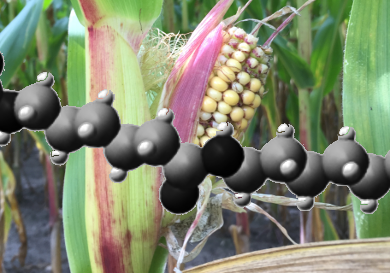Since scientists first reported millimeter-sized plastic particles in the Atlantic in the early 1970s, microplastic has gained attention as an environmental problem. Microplastic has been detected in the ocean, in rivers, in effluents from sewage treatment plants and sewage sludge. It is spread as fine dust in the air, such as tire wear, as sewage sludge fertilizer and landfill leachate on the ground, and also with rainwater.
Microplastic is a transport vehicle for pathogenic microorganisms and pollutants. It is non-polar, so persistent organic environmental pollutants (POPs) can accumulate on it and then via the food chain in organisms. Humans take up microplastics with fish and marine animals, but possibly also with other foods. It is, however, poorly studied whether foods that do not come from the sea contain tiny plastic particles.
Microplastic particles are defined as polymer particles of synthetic origin smaller than 5 mm. Most particles of sizes from 5 to 1 mm are classified as big and everything below this as small microplastic. At the lower limit, however, sizes vary depending on the examination method. So far, there is no standardized method for investigating microplastic. Micro-Fourier transform infrared spectroscopy (μ-FT-IR) and µ-Raman spectroscopy, where a microscope is coupled with a high-resolution Raman spectrometer, are most common to detect processed microplastic particles and to identify them.
Studies with μ-FT-IR spectroscopy only capture particles down to a lower limit of 20 µm. Raman spectroscopy makes microplastic particles of up to 1 µm visible; with special techniques also down to 0.3 μm. These were previously overlooked. Particularly in the analysis of food, it is interesting to detect very small microplastic, as the intestine probably absorbs smaller particles better than larger ones.
When it comes to the analysis of very small microplastic, it is a problem that these tiny particles are ubiquitous. To minimize particle contamination from the outside, expensive purification procedures are necessary. Work on a permanent clean bench and blank controls on all substances and solutions used are indispensable.
Christophe Goldbeck, Peter Fürst, Hans-Ulrich Humpf, and Darena Schymanski, University of Münster, Germany, think that automated µ-Raman spectroscopy is an effective strategy for studying particles smaller than 50 µm. They suggest that along with checked blank tests and sample preparation tailored to the matrix, automated μ-Raman spectroscopy provides reliable statements whether microplastic and very small microplastic is present in food. On this basis, standardized analytical methods for the various foodstuffs should be developed.
- Kunststoffpartikel sind überall – auch in Lebensmitteln?, (in German)
Christophe Goldbeck, Peter Fürst, Hans-Ulrich Humpf, Darena Schymanski,
Nachr. Chem. 2016, 65, 842–846.
DOI: 10.1002/nadc.20164052892



